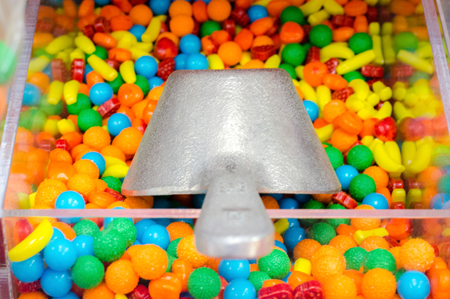Sugar Continues To Dissolve
Category: Sugar
 (Seeking Alpha) – Sugar is a staple commodity that is an ingredient in candies, cakes, jellies, and other foods we consume on a daily basis. Technology has created the ability to produce fuel from the raw form of the sweet commodity. In Brazil, the world’s leading producer of sugarcane, sugar-based ethanol powers automobiles and has made the South American nation the world’s leader in ethanol exports.
(Seeking Alpha) – Sugar is a staple commodity that is an ingredient in candies, cakes, jellies, and other foods we consume on a daily basis. Technology has created the ability to produce fuel from the raw form of the sweet commodity. In Brazil, the world’s leading producer of sugarcane, sugar-based ethanol powers automobiles and has made the South American nation the world’s leader in ethanol exports.
Sometime around 8000 BC, the people of the South Pacific island of New Guinea first domesticated sugarcane. In 500 AD India became the first location where sugar in a solid form became popular. Greek and Roman civilizations used sugar for medicinal purposes rather than as a food additive.
In 1747, German chemist Andreas Marggraf identified sucrose in the sugar beet root, which established a new source for the sweet commodity. Therefore, sugar production moved from only tropical climates that support the growth of sugarcane to more temperate growing locations. While there is lots of evidence that sugar consumption contributes to a host of medical problems including diabetes and other ailments, the soft commodity continues to be a primary food essential in today’s world.
The price of sugar can be highly volatile. Many producing countries support local sugar producers via subsidies and tariffs on imports. However, sugar trades in the free market on the Intercontinental Exchange and the weather and crop conditions in critical growing areas around the world can cause massive swings in the price of the agricultural product. Since 1971 the price of sugar has traded from lows of 2.29 cents to highs of 66 cents per pound.
A bear market since October 2016
In August 2015 the price of nearby sugar futures on the ICE Exchange traded to lows of 10.13 cents per pound under the weight of oversupply of the sweet commodity. Sugar made a low at a time when many other raw material prices were falling. At the end of 2015 and in early 2016, many commodities prices found significant bottoms, but sugar was one of the first to reject lows in the summer of 2015 as the low price turned a glut into a deficit, and the price began to rise.




